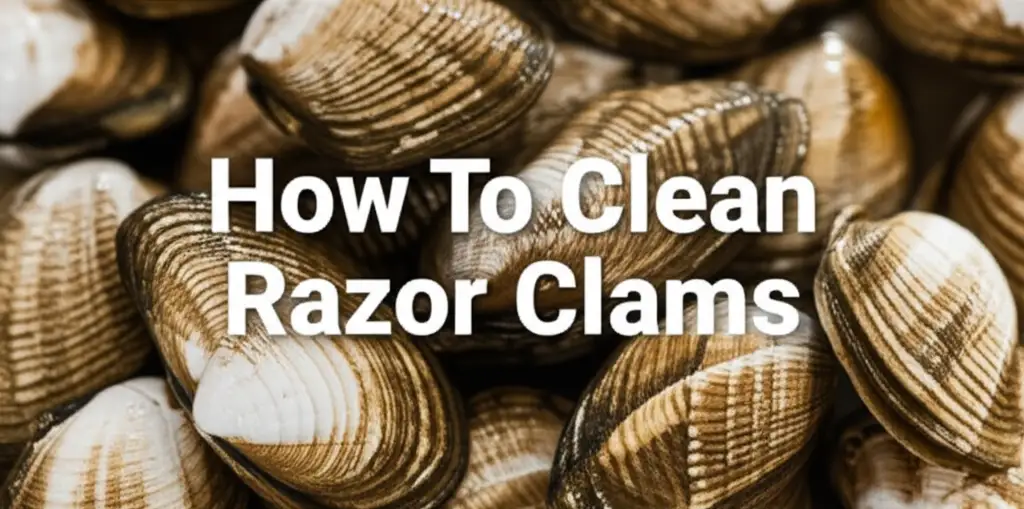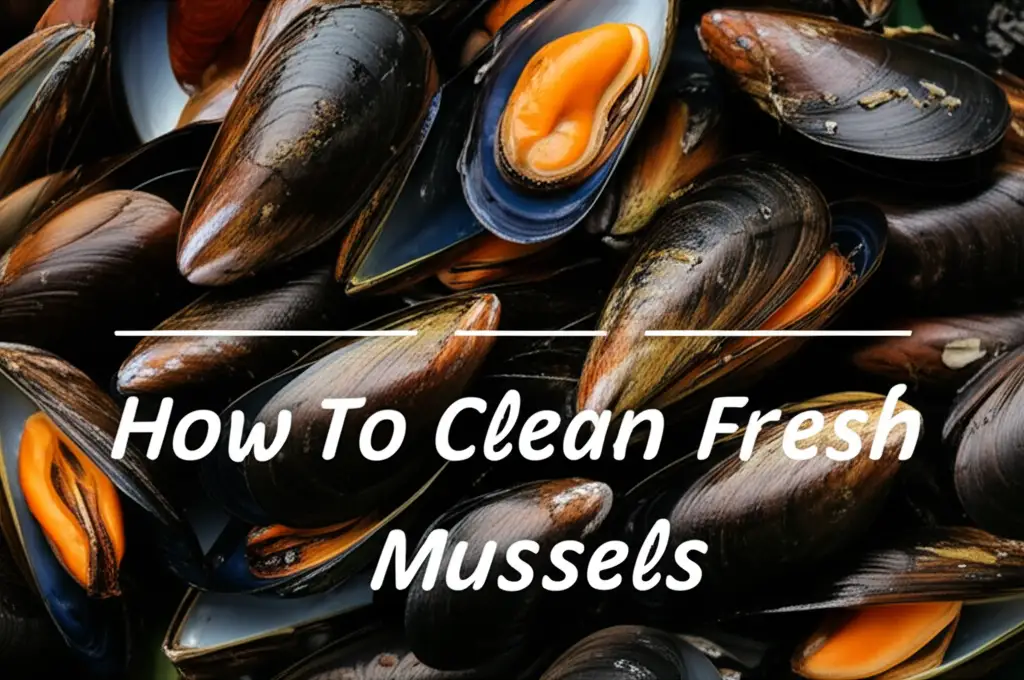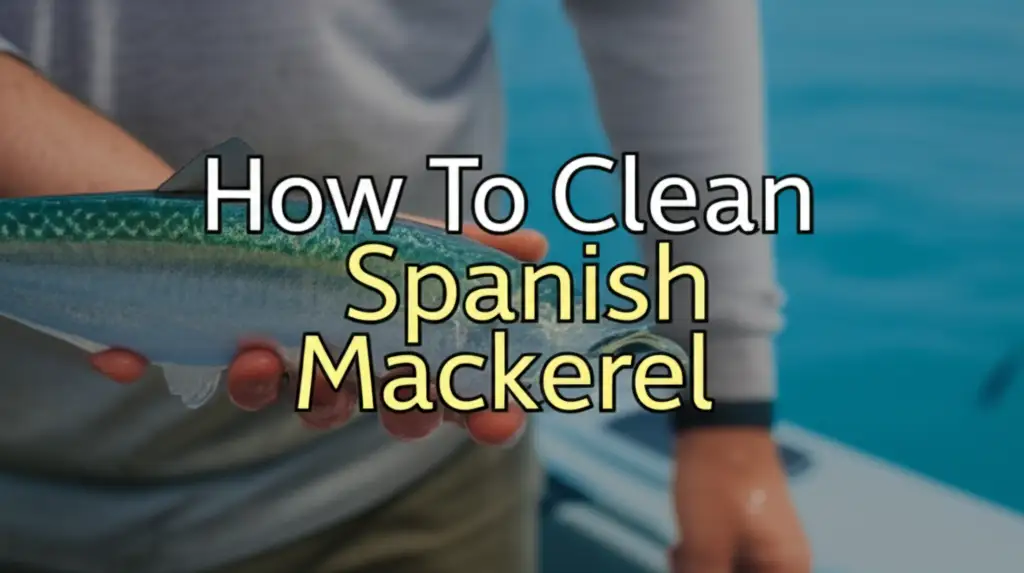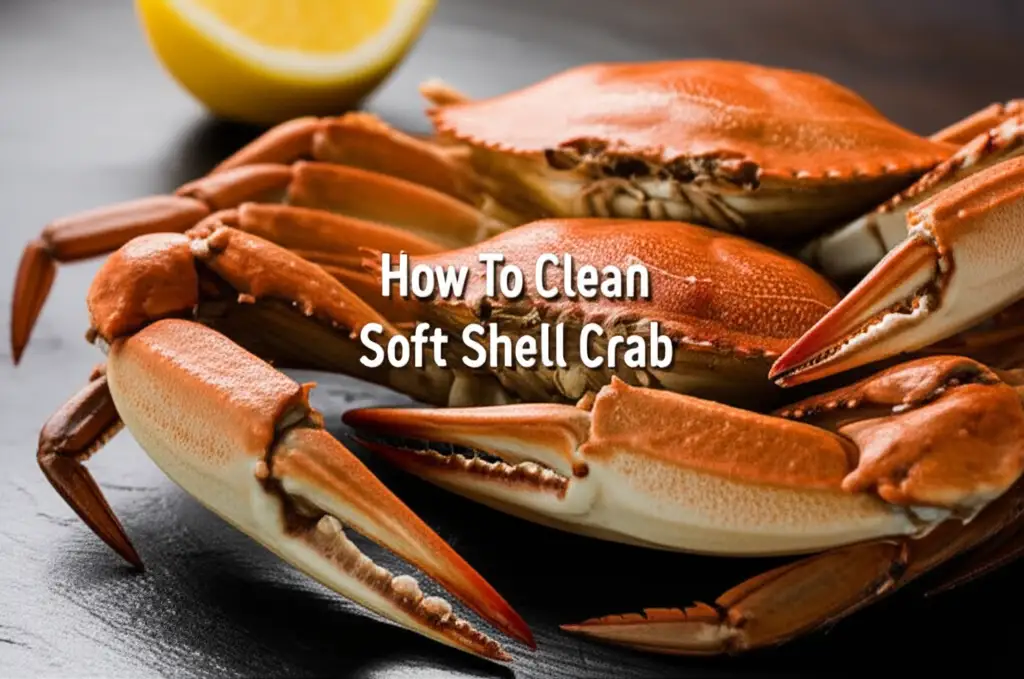· Seafood Preparation · 13 min read
How To Clean Razor Clams

Master Cleaning Razor Clams: A Simple Guide
Imagine serving a meal of perfectly tender, grit-free razor clams. This is a dream for many seafood lovers. Fresh razor clams offer a unique taste of the ocean. However, they must be cleaned correctly before cooking. Cleaning razor clams might seem hard at first. But I am here to show you it is a simple process.
This guide helps you learn how to clean razor clams with confidence. We will cover everything from purging sand to trimming the clam meat. Proper cleaning ensures your dishes are delicious and safe. We will walk through each step clearly. You will soon master this kitchen skill.
Takeaway
Cleaning razor clams ensures a delicious and grit-free meal. Here are the key steps:
- Purge clams in salt water to remove sand.
- Blanch or freeze clams to open shells.
- Remove the dark digestive tract and siphon.
- Rinse the clam meat thoroughly.
- Store cleaned clams properly for freshness.
How do you clean razor clams?
You clean razor clams by first purging them in salt water. This removes sand and grit. Then, you briefly blanch or freeze them to open the shells. Next, you remove the dark digestive tract and siphon from the meat. Finally, you rinse the clam meat well under cold water.
Essential Tools for Cleaning Razor Clams
Starting any kitchen task with the right equipment makes it easier. Cleaning razor clams is no different. You do not need many special tools. A few basic items will help you greatly. Having these ready saves you time and effort. I find preparing my workspace first always helps.
You will need a large bowl for soaking the clams. This bowl must be big enough for all your clams. It allows them to move around and release sand. A sturdy colander is also important. It helps you rinse the clams without losing any. You will use it for draining them after soaking.
Sharp kitchen shears or a small, sharp knife are very useful. These tools help you trim the clam meat cleanly. I prefer shears for precision cuts. A cutting board protects your counter surfaces. Make sure it is clean before you start. You will handle raw seafood, so hygiene matters.
Finally, prepare a bowl with ice water. This bowl is for stopping the cooking process if you blanch the clams. It also helps keep the clam meat firm. Having a separate bowl for cleaned clam meat is also a good idea. This keeps it separate from any dirty clams. A clean kitchen workspace makes all the difference. Remember to also properly clean your cooking tools, like knowing how to maintain a clean bottom of a pan after cooking.
Purging Razor Clams: Removing Sand and Grit
One of the most important steps in cleaning razor clams is purging. This process removes sand and grit from inside the clams. Razor clams live in sandy beds. They take in a lot of sand as they filter water. If you skip this step, your cooked clams will be gritty. No one wants sand in their dinner!
You will need a large non-metal container. A plastic bucket or a glass bowl works well. Fill the container with cold water. Add about one-third cup of sea salt or non-iodized salt for every gallon of water. Stir the salt until it dissolves completely. The salt water should mimic the clams’ natural habitat.
Place your razor clams into the salt water. Make sure they are fully submerged. Do not crowd the clams. If you have many clams, use multiple containers or purge them in batches. Cover the container with a lid or a cloth. This keeps the area dark. Darkness encourages the clams to relax and filter water.
Let the clams soak for at least two hours. Four hours is even better. Some people soak them overnight. During this time, the clams breathe. They pump water through their systems. This action expels sand and impurities. You will see sand settle at the bottom of the container. Change the water once or twice if it becomes very cloudy. This process is similar to how you might clean other bivalves, such as when you clean little neck clams. A good purge ensures a much better eating experience.
Shucking Razor Clams: Opening the Shells
After purging, you need to open the razor clam shells. This step is called shucking. Razor clams have long, fragile shells. They can be tricky to open without breaking them. There are a few common methods to shuck razor clams. I have found certain ways work best for me.
One popular method is blanching. Bring a large pot of water to a boil. Prepare a bowl of ice water next to it. Drop a few razor clams into the boiling water for about 10-15 seconds. Do not cook them longer than this. You just want them to relax. Immediately remove the clams with a slotted spoon. Transfer them to the ice water bath. This shock helps loosen the shell. The clam should gape open slightly. You can then easily separate the shells.
Another method involves freezing. Place the purged razor clams in a freezer for about 15-20 minutes. This cold shock makes the clam relax its adductor muscle. The shells will often open a crack. You can then gently pry them open. This method avoids any cooking, which some people prefer for raw preparations. Be careful not to freeze them solid.
Some people prefer to shuck them raw. You can use a thin, dull knife, like an oyster knife. Slide the knife between the shells. Carefully work it around to cut the adductor muscle. This muscle holds the shells shut. This method needs practice. I usually stick to blanching or freezing because it is simpler for most home cooks. Once the shells are open, you can begin the detailed cleaning.
Trimming and Cleaning Razor Clam Meat
Once you have opened the razor clam shells, the real cleaning of the meat begins. This step removes the parts you do not want to eat. It ensures a clean taste and texture. You will find several distinct parts inside the clam. Knowing what to remove is key.
First, identify the dark digestive tract. This is a black or dark green line. It runs along the clam’s body. Use your sharp kitchen shears or a small knife to cut it out. Simply snip along its length. Remove this entire dark line. It can contain sand or grit, and it does not taste good.
Next, focus on the siphon. This is the long, sometimes brownish tube at one end of the clam. It is used for filtering water. While edible, many people prefer to remove the very tip of the siphon, especially if it is dark or tough. You can also slit the siphon lengthwise and rinse it. This helps ensure no sand remains inside. Some prefer to remove the entire siphon.
Locate the foot, which is the muscular part the clam uses to dig. This part is usually firm and white. It is perfectly edible and often prized. You may see a small, dark membrane or sac near the base of the foot. Pinch and remove this if it looks like a small, dark blob. This is part of the digestive system. You want to make sure the meat looks clean and white.
Carefully separate the clam meat from any remaining shell bits. You want just the pure, clean meat. The goal is a tender, appealing piece of clam. Take your time with each clam. This detailed cleaning makes a big difference in flavor.
Final Rinsing and Storing Cleaned Clams
After you have trimmed and cleaned each razor clam, a final rinse is crucial. This step washes away any last bits of sand or debris. It makes sure your clam meat is ready for cooking. Do not skip this important final wash.
Place your cleaned clam meat into a colander. Rinse the clams thoroughly under cold running water. Use a gentle stream of water. You can even agitate them lightly with your hands. This helps dislodge any stubborn grit. Continue rinsing until the water runs clear. You will notice the clam meat looks brighter and cleaner. It should feel smooth and firm.
Once rinsed, let the clams drain completely in the colander. You can gently pat them dry with paper towels. Removing excess water helps them cook better. It prevents them from steaming instead of searing. Dry clam meat also absorbs marinades or seasonings better.
If you plan to cook the clams immediately, they are ready. If not, proper storage is important for freshness. Place the cleaned razor clam meat in an airtight container or a resealable bag. Store it in the refrigerator. It will stay fresh for one to two days. Make sure the container is sealed well. This prevents odors from spreading.
For longer storage, you can freeze cleaned razor clam meat. Place it in a freezer-safe bag or container. Remove as much air as possible before sealing. Frozen razor clams can last for several months. When you are ready to use them, thaw them slowly in the refrigerator. Always ensure your containers are clean before storing food. Maintaining a clean baking steel or any other cooking surface helps keep your kitchen hygienic.
Common Issues When Cleaning Razor Clams and How to Avoid Them
Even with careful steps, you might run into a few issues when cleaning razor clams. Knowing these common problems helps you avoid them. I have encountered these myself. Learning from them makes the process smoother. Do not get discouraged if your first attempt is not perfect.
One common issue is incomplete purging. You might still find grit in your cooked clams. This usually happens if the clams did not soak long enough. It can also happen if the salt water was not salty enough. Make sure to use enough salt and give the clams ample time. Changing the water during purging also helps. This removes the sand already expelled by the clams.
Another problem is breaking shells during shucking. Razor clam shells are delicate. If you use too much force, they can shatter. This makes cleaning harder. When blanching, do not overcook the clams. Just a short dip is enough to relax them. If using the freezing method, do not freeze them solid. A slight chill is all you need. Gentle handling is key for intact shells.
Some people struggle with identifying the digestive tract. It can be small or blend in. The digestive tract is usually a thin, dark line. It runs along the main body of the clam. It is often black or dark green. Practice makes perfect here. Using good light helps you see it clearly. A sharp pair of kitchen shears gives you more control for precise removal.
Finally, ensuring all parts are removed is important. Sometimes small pieces of membrane or residual grit can remain. A thorough final rinse helps catch these. Running your fingers gently over the clam meat can help you feel for any rough spots. Taking your time with each clam ensures a superior result.
Why Proper Cleaning of Razor Clams Matters
You might wonder why all this effort in cleaning razor clams is necessary. The truth is, proper cleaning is vital for both safety and enjoyment. Eating seafood should be a pleasure. It should not cause worry. I always stress the importance of good food preparation.
First, cleaning removes sand and grit. This is the most obvious reason. Sand in your food is unpleasant. It ruins the texture. It makes your delicious clam dish gritty and unappetizing. A well-cleaned clam offers a smooth, tender bite. This greatly enhances the eating experience.
Second, cleaning removes the digestive tract and other undesirable parts. These parts can contain impurities. They might also carry bacteria or toxins. Removing them makes the clam safer to eat. It reduces the risk of foodborne illness. Your health is always the top priority.
Third, proper cleaning improves the flavor of the clam meat. The digestive tract can sometimes impart a bitter or off-flavor. Removing it allows the natural sweet, briny taste of the razor clam to shine through. You want to taste the fresh ocean flavor, not bitterness. The meat looks more appealing too.
Finally, knowing how to clean razor clams well gives you confidence. You can serve your seafood dishes proudly. Your guests will appreciate the effort. They will enjoy the delicious, clean clams. It is a skill that empowers you in the kitchen. Enjoying fresh seafood starts with knowing how to prepare it properly.
Frequently Asked Questions About Cleaning Razor Clams
How long should I purge razor clams?
You should purge razor clams for at least two hours. Four hours is often better. Some people soak them overnight for up to 12 hours. This longer period gives the clams more time to release sand and grit. Remember to change the water if it becomes very cloudy during purging.
Can I clean razor clams without blanching them?
Yes, you can clean razor clams without blanching. The freezing method is a good alternative. Place clams in the freezer for about 15-20 minutes. This cold shock makes them relax. Their shells will open slightly. You can then shuck them gently. This avoids any cooking of the clam.
What parts of the razor clam should I remove?
You should remove the dark digestive tract, which is a black or dark green line. You should also slit and rinse the siphon or remove its tough tip. Any small, dark membranes near the foot should also be pinched off. The foot itself is edible and delicious.
How do I store cleaned razor clams?
Store cleaned razor clams in an airtight container or a resealable bag. Keep them in the refrigerator for one to two days. For longer storage, freeze them. Place them in a freezer-safe bag. Remove air before sealing. They can last several months in the freezer.
Why are my razor clams still gritty after cleaning?
Razor clams are still gritty usually because of incomplete purging. Make sure you use enough salt in the purging water. Also, allow enough time for the clams to soak. Changing the purging water once or twice can also help. A thorough final rinse is also important.
Is the siphon of a razor clam edible?
Yes, the siphon of a razor clam is edible. However, many people prefer to remove the very tip of it. This tip can sometimes be tough or contain more impurities. Slitting the siphon lengthwise and rinsing it helps ensure it is clean before eating.
Conclusion
You have now learned how to clean razor clams thoroughly. This guide covered every important step. We started with getting your tools ready. Then, we purged the clams to remove all that hidden sand. We discussed opening the shells and trimming the meat. Finally, we learned about the important final rinse and storage methods. Remember that proper cleaning is a simple skill. It makes a big difference in your cooking.
Taking the time to clean razor clams correctly ensures a wonderful meal. You get tender, grit-free seafood. This also makes your dishes safe and full of flavor. I encourage you to try these steps for yourself. Enjoy the process of preparing fresh razor clams. You will love the delicious results. Get ready to enjoy the best of the ocean in your kitchen!
- Razor Clams
- Clam Cleaning
- Seafood Preparation




